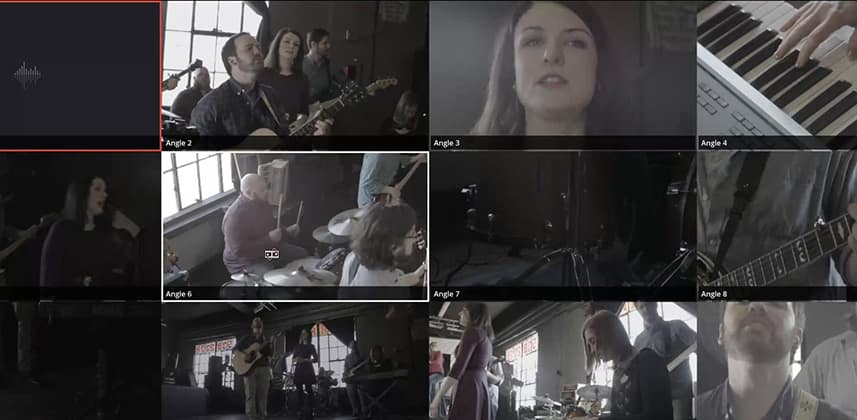Resolve 14: How to adjust sync between multicam camera angles
Have you ever tried to create a multicam clip using Resolve’s automated sound-matching function? Resolve compares the audio waveforms of each clip and aligns the waveforms together. When it works, it’s magic. When it doesn’t, it can be off by 2 frames… or 2 minutes! A bad multicam clip can be frustrating to solve. In this Insight learn 4 different methods for fixing out-of-sync multicams.
Learn 4 methods to fix multicam sync problems
The most reliable method for syncing multiple cameras is to ‘jam-sync’ a single timecode source to every camera. If you’re lucky enough to have jam-synced timecode then you’re way ahead of the game. If you’re like the rest of us then this Insight will show you a selection of methods to solve sync problems between cameras. From using Markers to syncing by hand, you’ll learn how to ‘step in’ to a Multicam and make tweaks (small and big) so you can start editing.
This multicam project is featured in our upcoming Resolve 14 Certification Add-On training
The reason I’m posting this Insight is that I’m recording the paid add-on training for our upcoming (and free) Resolve 14 Quickstart series. The add-on series allows you to take (and pass, if you actually do the work) Blackmagic’s official Introduction to Resolve 14 Assessment Test & Certification. One of the topics the Assessment may test you on is the fundamentals on multicam. I’ve just finished up prepping this multicam project for delivery as part of our paid add-on training… and every problem I’ve mentioned in this Insight, it occurs in this project. So, this week multicam is on my mind – and now here in the Insights Color Correction Library. Which has me wondering about the direction of both DaVinci Resolve and Mixing Light.
Would you like to see more of these types of Insights?
As Resolve becomes three different software packages (editing, color grading, and audio mixing), do you want Mixing Light to branch out into these other topics, here in the Insights Library? Would you like to learn about the theory of using EQ to enhance dialog? Or the fundamentals of bussing and routing for sound design? Or understanding dynamic trimming on the Edit Page?
If the answer is yes then do you want us to simply limit our Insights to the tasks of a typical finishing artist? Or would you like to learn about theory and workflow from the aspect of a dedicated craftsman, perhaps to help you pick up editing or mixing as a secondary skill you can sell?
Leave a comment (or use the Contact Us page)
If you’d like to see the Insights Color Library continue as we’ve always done. Let us know. If you’d like to see us expand its focus, then let us know. Use the comments below or use the Contact Us page and leave an email!
Watch the end of the video below to hear me ask you this question and provide some additional context around it.
Enjoy this video Insight!
-pi
Member Content
Sorry... the rest of this content is for members only. You'll need to login or Join Now to continue (we hope you do!).
Need more information about our memberships? Click to learn more.
Membership optionsMember Login


